Joint 100th birthday celebrations for Welsh heritage railways
Posted by Chris Graham on 18th September 2023
Matthew Ditch reports on the joint, 100th birthday celebrations held recently at the Welsh Highland Heritage/Ffestiniog railways.
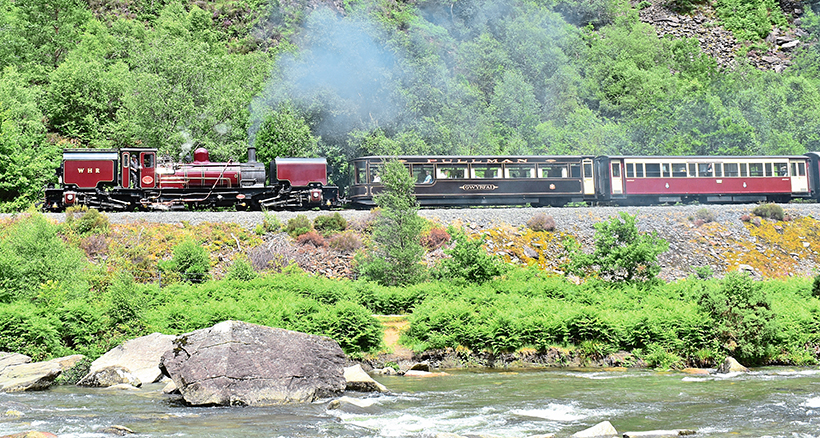
100th birthday celebrations: 1951 Beyer Peacock-built 2-6-2+2-6-2 NG16 No. 130 (ex-South African Railways) is very much part of everyday life these days, and heads the Snowdonia Star to Caernarfon. (Pic: Matthew Ditch)
This railway’s history really started in 1922, when it was formed by the linking of two much earlier railways – the North Wales Narrow Gauge Railways and the Croesor Tramway, by a new line between South Snowdon (Rhyd-Ddu) and Croesor Junction, some 8¼ miles in length.
On March 30th, 1922, a new company under the Light Railways Acts of 1896 and 1912, called the Welsh Highland Railway (Light Railway) Company, was created. It acquired from the January 1st, 1922, the undertakings of the North Wales Narrow Gauge Railways (NWNGR) and the Porthmadog, Beddgelert and South Snowdon Railway Co (PBSSR), together with the powers of these companies relating to the building of railways between Caernarfon and Porthmadog. The authorised capital of the company was £120,000, but only £90,000 was issued – fully paid – to the two undertakings acquired, in lieu of purchase money; £40,000 to the NWNGR and £50,000 to the PBSSR. No dividend was ever paid on these shares. The building of the WHF was financially supported by the Ministry of Transport and local authorities through the parishes the railway would run through.
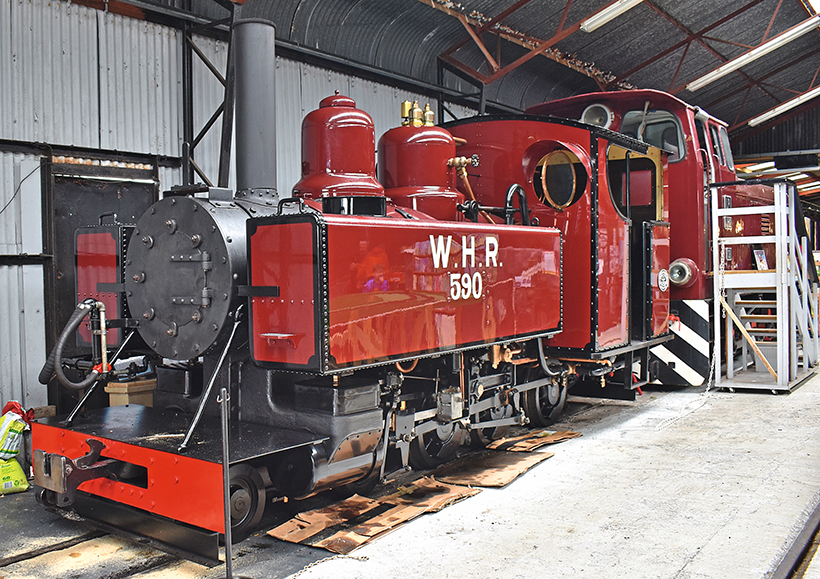
Seen at Gelert’s Farm Works with axle box problems, Welsh Highland Railway 1917 Baldwin 4-6-0 No. 794/590 created as it would have worked on the WHR 1922-37 but in even better condition. (Pic: Matthew Ditch)
The connecting section between Croesor Junction and South Snowdon was commenced in March 1922 by Sir Douglas Fox & Partners, and the contract for the building of the line was given to Sir Robert McAlpine & Sons on the basis of its experience, although not the cheapest tender. Attention was first given to reconditioning the old NWNGR section between Dinas and South Snowdon; this was re-opened for passenger traffic on July 31st, 1922. Although initially planned, passenger services were never re-introduced on the Bryngwyn branch, however, and it remained goods-only.
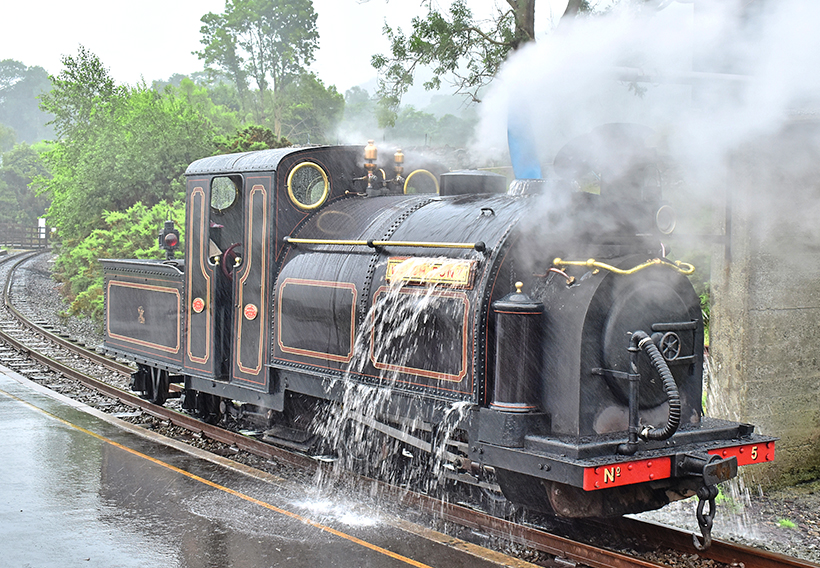
A rather wet 1867 George England-designed 0-4-0 saddle tank Welsh Pony that’s been out and about since 2020 and seen filling up at Bedgelert during the Friday evening photo opportunities. (Pic: Matthew Ditch)
The linking section was completed early in May 1923, and a series of trial runs carried out. The completed railway was officially opened for passenger traffic on June 1st, 1923, with through trains to Porthmadog. The WHR had the famous Colonel Holman Stephens as its locomotive superintendent and civil engineer of the railway, who struggled to keep the line open every way he could. It was this opening that was celebrated on June 23rd-25th this year, in mixed weather conditions.
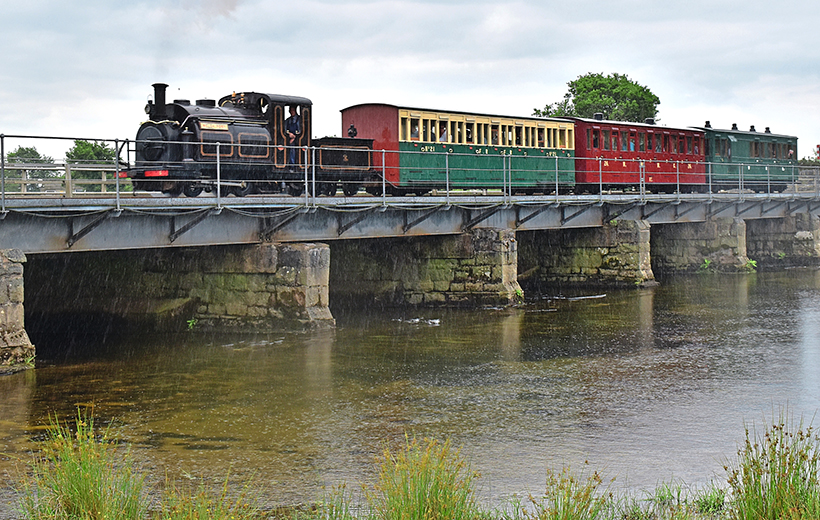
A short while later, Welsh Pony was seen crossing Afon Glaslyn with skies clearing. (Pic: Matthew Ditch)
Sadly, the work of the promoters was in vain and, by 1927, the WHR was in receivership but continued to operate under joint management with the Ffestiniog Railway that was also run by Stephens. However, the slate industry was in terminal decline, the railway’s passenger service was unreliable and its terminus was three miles distant from the tourist town of Caernarfon. This gave the motor bus a leg-up compared to its railway equivalent which took longer to travel the same distance. The economic depression of the late 1920s and ’30s hit both railways very hard, and the WHR was effectively closed at the end of 1933. Surprisingly, the Ffestiniog Railway took an amazing 42-year lease on the line which it continued to operate until September 1936 and it all finally closed to freight traffic in June 1937.
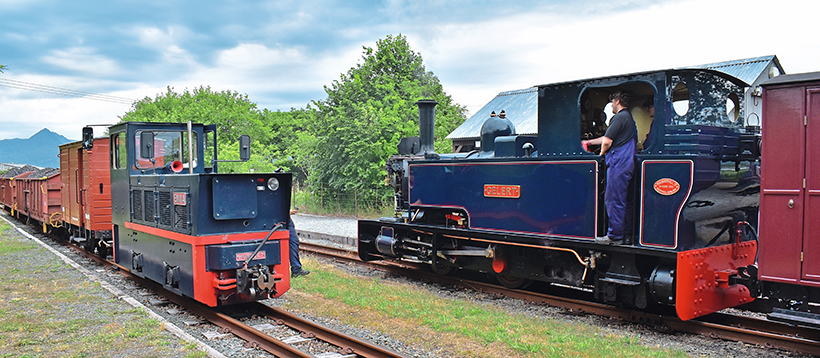
Seen at Pen-y-mount Station is 1953 Bagnall 0-4-2 side tank No. 3050 Gelert. It was built for the Rustenberg Platinum Mines, 100 miles north-west of Johannesburg, South Africa. Today it’s part of the Welsh Highland Heritage Railway, here with Hunslet diesel Emma. (Pic: Matthew Ditch)
The Ffestiniog Railway went to court to renounce its 42-year lease which was granted. The remains of the WHR had been requisitioned for the war effort and the track was lifted by 1942 and mostly everything scrapped. The Welsh Highland Railway in this form had lasted just 14 years.
However, the revival of the Welsh Highland Railway took many years to achieve, with plenty of false dawns, but reopening finally started from 1997 with completion in 2011, completing the success story with the WHR 100 on June 23rd-25th, 2023.
Regarding the line’s locomotives, the principal one was the 1906 Hunslet 2-6-2 tank outside frame Russell that was new to the PB&SSR which was never completed. It was then sold to the North Wales Narrow Gauge Railway (NWNGR). The locomotive was named after the chairman, MD and second receiver of that company, JC Russell.
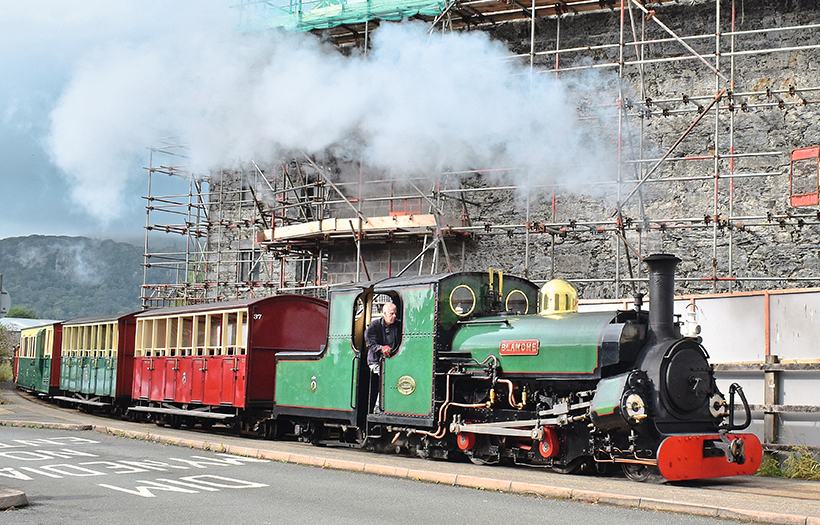
Here’s 1893 2-4-0 Hunslet Blanche, of the Ffestiniog Railway, with a short train of their stock at Snowdon Street returning from the WHHR. (Pic: Matthew Ditch)
In 1922 the engine became the property of the Welsh Highland Railway and, in 1924, it was cut down and changed its looks completely to run on the Ffestiniog Railway as the line’s bridges and tunnels were built to a restrictive loading gauge, even then it could not travel beyond Moelwyn tunnel where it got stuck on its trial run!
After the WHR closed, Russell ran the last through train and was left in the sheds at Dinas. Still complete, the engine was requisitioned for war service and refurbished by the Brymbo Steel Works, who re-gauged it and sent it to the Brymbo Ironworks Railway near Hook Norton, Oxfordshire, where it was converted to a 0-6-2T after frequent derailments on the industrial tracks.
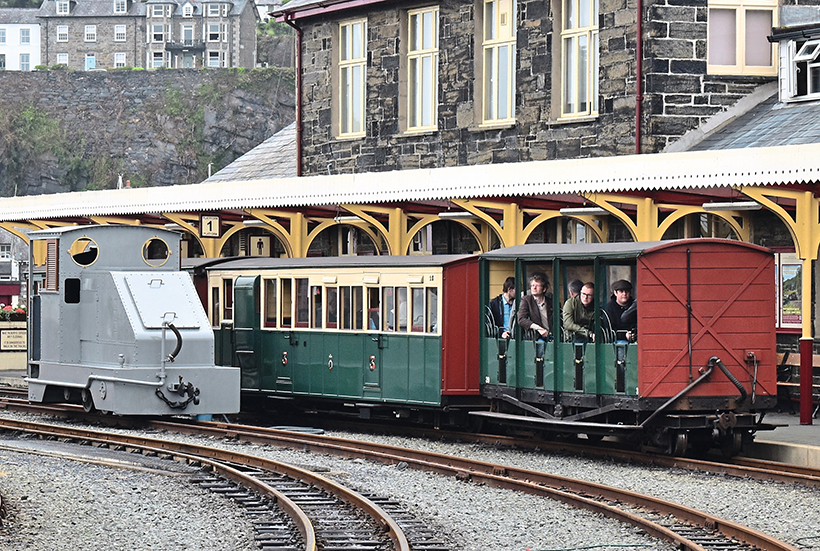
Seen at Porthmadog Harbour Station is the pioneering 1928 Kerr Stuart 6wDM No. 4415 diesel locomotive.
(Pic: Matthew Ditch)
In 1946 the engine was sold to Fayle’s Tramway who re-gauged it back to 1ft 11½in, and ran it in the Isle of Purbeck, Dorset; unfortunately, in 1953, it damaged one of its axles and was taken out of service. Then, thankfully, in 1954 Russell was purchased by the Birmingham Locomotive Club for £70 and, in 1965, was donated to the WHR Ltd and taken to its base at Kinnerly. The Hunslet Company repaired the damaged axle for nothing, and Russell once again commenced its wanderings from Kinnerley, Carnforth, Llanberis and finally to the Welsh Highland Heritage Railway at Gelert’s Farm Works.

Lilla, seen here at Pen-y-mount; the 1891 Hunslet 0-4-0 No. 554 was built for the Cilgwyn Slate Co Quarry at Nantlle. (Pic: Matthew Ditch)
During its journeying, it collected a new boiler (£3,440 in 1969) and the restoration was finished in 1987, when it arrived on the WHR Ltd line. From 2007 to 2014, Russell underwent a major overhaul and refit bringing it back to like it was in 1906. The work included new water tanks, the removal of the later vacuum brake gear and many other things. Quite naturally the engine was one of the stars over the 2023 June weekend.
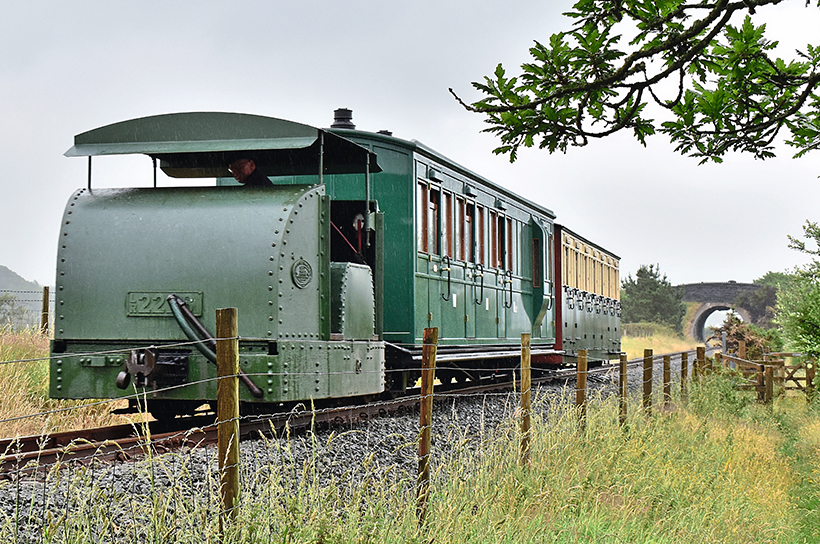
WW1 Simplex Mary Ann No. 2218 arrived on the Ffestiniog in 1923, and was the first locomotive to work on the revived railway in 1954. It’s seen leading the WHR inspection train towards Porthmadog. (Pic: Matthew Ditch)
The WHR had a shortage of engines in its early days and the England 0-4-0 class was borrowed from the Ffestiniog Railway to run on the line. On July 4th, 1923, Colonel Stephens acquired for £240 a World War One Baldwin built on March 1st, 1917. The 10-12-D class 4-6-0 No. 590 saw service on the Western Front during WW1 and then went to Bagnalls of Stafford in 1919 where it was rebuilt and was delivered to Dinas Junction by EW Farrow & Son, of Spalding, Lincolnshire, from where Stephens had bought the engine in the first place. It’s said it arrived by road steam, but I have no proof of that.
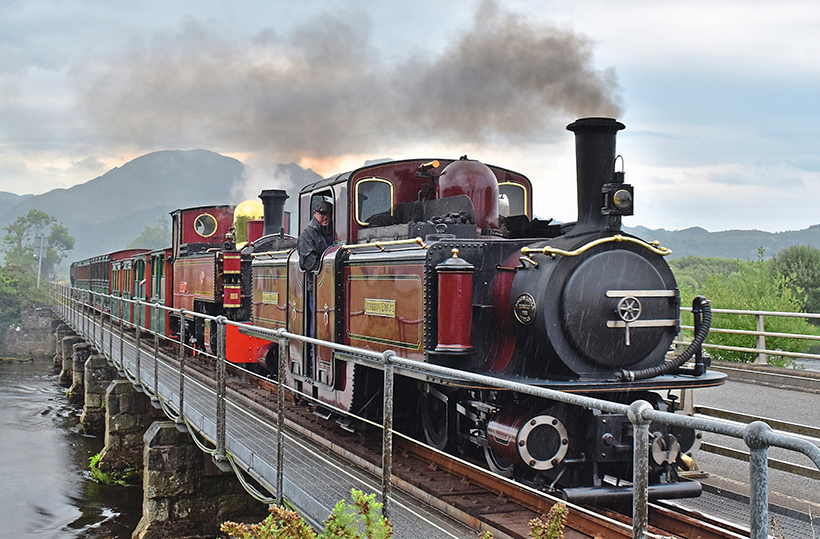
The 1879 0-4-04-0 double Fairlie Merddin Emrys was the first locomotive the Ffestiniog Railway Co built at its own Boston Lodge. Here it leads Russell over the bridge at Pont Croesor. (Pic: Matthew Ditch)
The engine was very rough riding and restricted to the Welsh Highland Railway only and was in a red livery in its later life. Unfortunately, it was cut up by scrap dealer George Cohen in 1942, but it’s works plate survives today with the NRM.
However, that’s not the end of the story, as a batch of 50 Baldwin 4-6-0s went to India and two were brought back to the UK in 1985 by the Imperial War Museum, including No. 794. Progress on its restoration didn’t start until the late Peter Thompson – the then vice-chairman of the WHR Ltd – came to an agreement with the IWM in 2003 for the long-term loan of the engine. The restoration of the locomotive to No. 590 has recently been completed in the workshops of the Vale of Rheidol Railway at Aberystwyth. The unveiling of the engine to its supporters and donors, including the IWM, took place on May 27th-28th, and was very much part of the celebrations in late June when the general public saw it officially for the first time in its new guise, but not running.
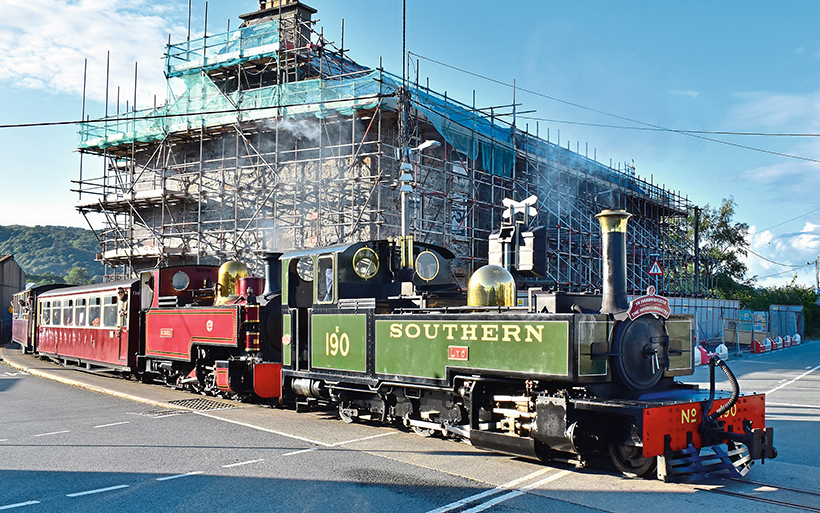
The replica Lynton & Barnstaple 2-6-2 Lyd with the very genuine 1906 WHR 2-6-2 Russell cross Snowdon Street with the last train of the event. (Pic: Matthew Ditch)
Making a guest appearance here was the Apedale Valley Railway’s 4wPM Motor Rail locomotive No. 2197, that was used in the construction of the original WHR. This engine is part of the Moseley Railway Trust collection today and was out on the recreated construction train with a rake of former F&WHR tipper wagons from Porthmadog (WHHR) to Pen-y-Mount Junction.
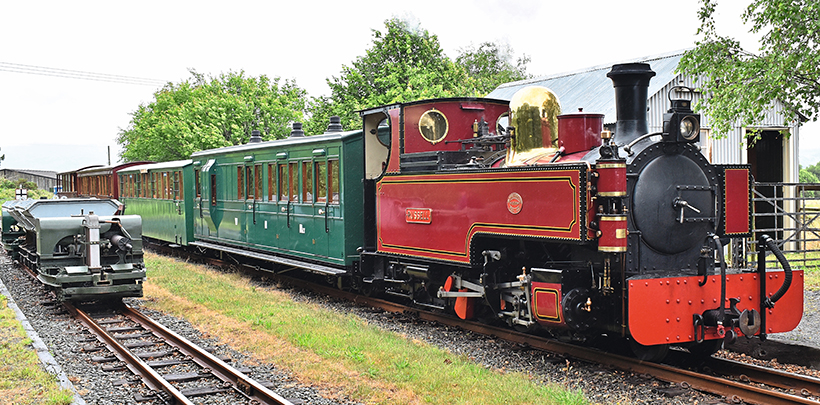
The handsome Russell gets ready to leave Pen-y-mount with a pair of Simplex locos in the loop. (Pic: Matthew Ditch)
There were other visiting engines from the adjoining Ffestiniog Railway, including 1893 2-4-0 (originally 0-4-0) Hunslet Blanche and 1891 Hunslet 0-4-0 No. 554 Lilla. This engine was built for the Cilgwyn Slate Co Quarry at Nantlle and, from 1923, Cilgwyn slates were despatched by a link with the Fron Quarry which provided access to the Bryngwyn Incline, then via the Welsh Highland Railway to Dinas Junction.
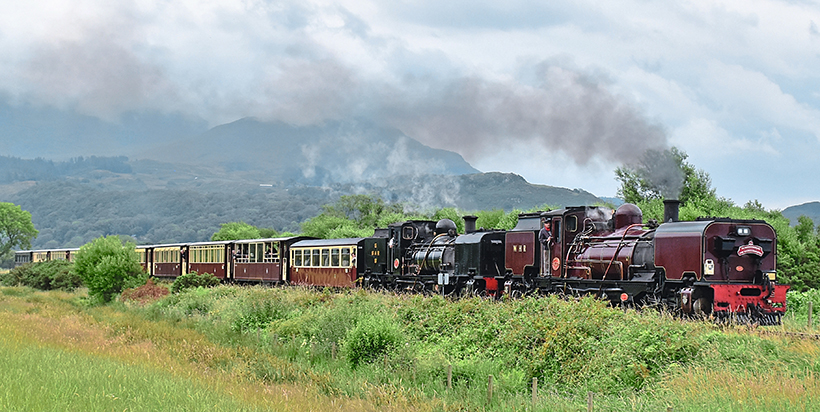
‘The Harbourmaster’ is headed by 1951 Beyer-Garratt NGG 16 2-6-2+2-6-2 No. 130 and 1937 Cockerill-built 2-6-2+2-6-2 No. 87, back in South African Railway black livery since 2020. (Pic: Matthew Ditch)
All-in-all it was a wonderful weekend of celebration in differing weather conditions which became a challenge at times.
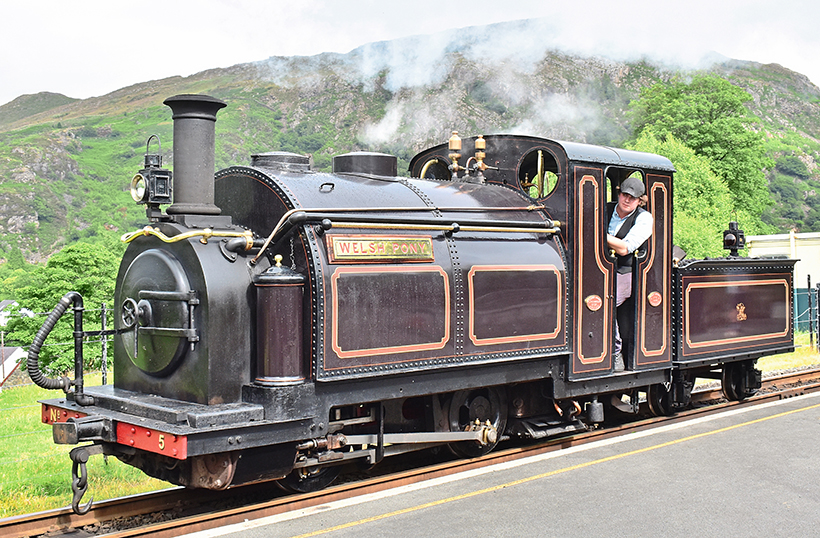
Running round at Beddgelert is 1867 0-4-0 Welsh Pony, looking very workman-like. (Pic: Matthew Ditch)
Old Glory thanks the WHHR and the WHR/FR for their great help in compiling this article.
This feature comes from the latest issue of Old Glory, and you can get a money-saving subscription to this magazine simply by clicking HERE





